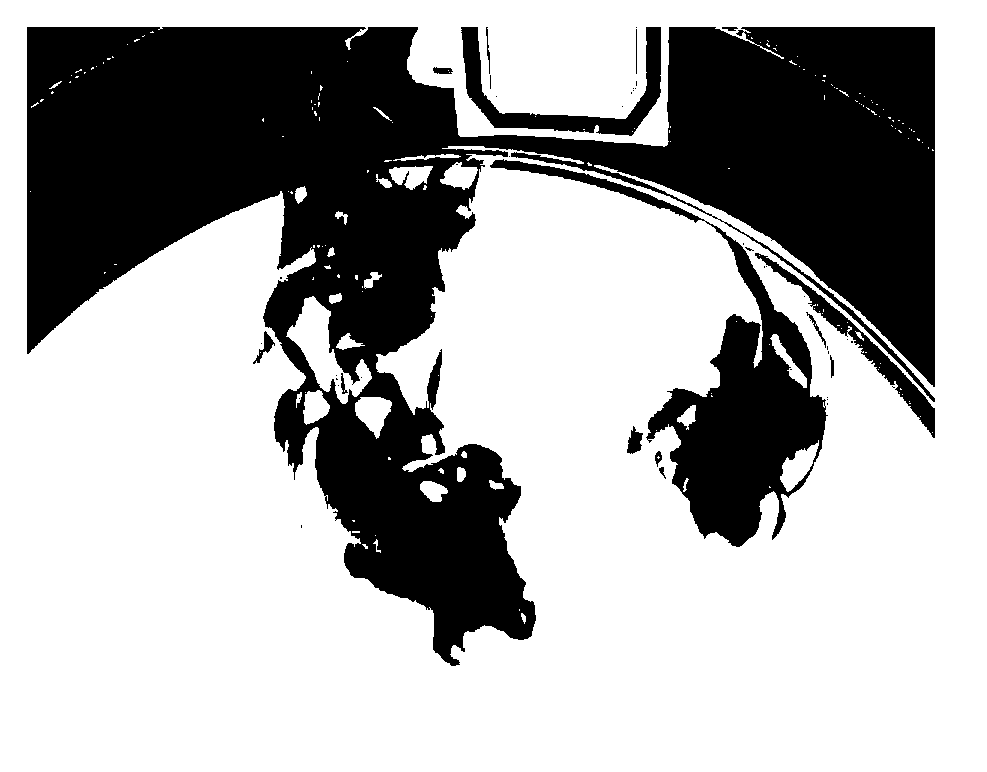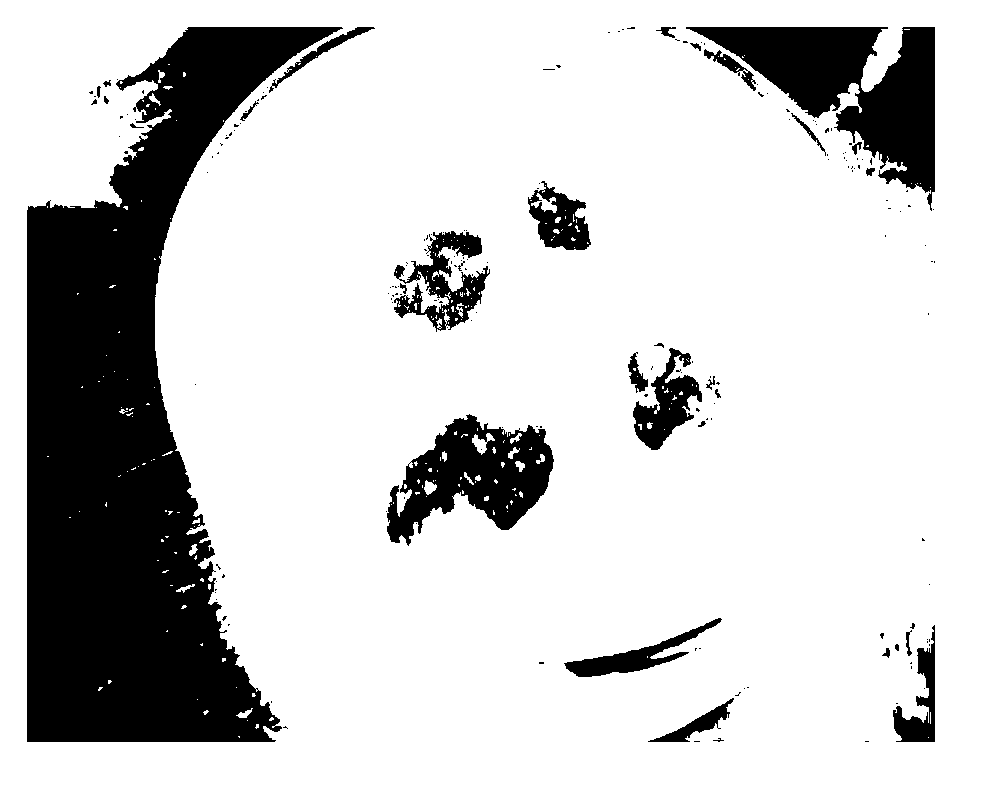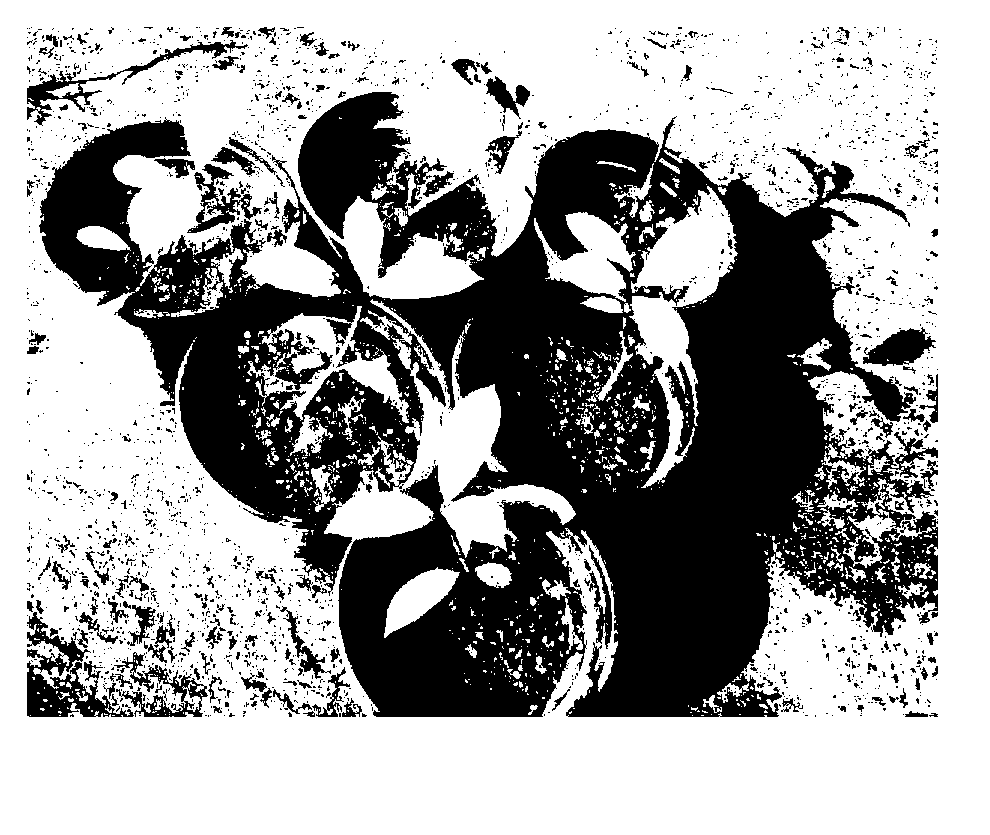Breeding method for inducing photinia serrulata somatic cell by using 60Co r ray radiation
A technology of somatic cells and red leaves, applied in the field of plant radiation mutagenesis treatment, to achieve the effect of improving radiation mutagenesis efficiency and broadening germplasm resources
- Summary
- Abstract
- Description
- Claims
- Application Information
AI Technical Summary
Benefits of technology
Problems solved by technology
Method used
Image
Examples
Embodiment 1
[0021] Take the 3rd to 6th unfolded leaves of the test-tube seedlings as explants, the leaves have short petioles, cut off the serrated leaf edges around the leaves, cut the leaves into left and right halves along the main vein, and lightly scratch the leaves once, The back of the leaf is placed close to the medium, and inoculated in the improved MS+2,4-D0.1mg / L+BA0.5mg / L+NAA20.0mg / L+3.0g / L phytagel+20g / L sucrose On wound tissue proliferation medium, pH value 5.8, cultured in dark for 10 days, induced somatic embryogenic callus as radiation material.
[0022] with a radiation dose of 45Gy 60 Cor ray irradiated the above irradiated materials for 60 minutes, and transferred the irradiated materials to the improved MS+2.0mg / L BA+3.5g / L phytagel+20g / L sucrose embryogenic callus differentiation medium, the pH value 5.8, continue dark culture at 25±2°C for 30 days, and subculture once in the middle.
[0023] Transfer the above culture materials to a tissue culture room with a temp...
Embodiment 2
[0027] Take the 3rd to 6th unfolded leaves of the test-tube seedlings as explants, the leaves have short petioles, cut off the serrated leaf edges around the leaves, cut the leaves into left and right halves along the main vein, and lightly scratch the leaves once, The back of the leaf is placed close to the medium, and inoculated in the improved MS+2,4-D0.1mg / L+BA0.5mg / L+NAA20.0mg / L+3.0g / L phytagel+20g / L sucrose On wound tissue proliferation medium, pH value 5.8, cultured in dark for 10 days, induced somatic embryogenic callus as radiation material.
[0028] with a radiation dose of 30Gy 60 Co-r rays irradiated the irradiated material for 90 minutes, and transferred the irradiated material to the improved MS+2.0mg / L BA+3.5g / L phytagel+20g / L sucrose embryogenic callus differentiation medium, pH The value is 5.8, and the temperature is 25°C, continue to culture in dark for 35 days, and subculture once in the middle.
[0029] Transfer the above culture materials to a tissue cu...
Embodiment 3
[0033] Take the 3rd to 6th unfolded leaves of the test-tube seedlings as explants, the leaves have short petioles, cut off the serrated leaf edges around the leaves, cut the leaves into left and right halves along the main vein, and lightly scratch the leaves once, The back of the leaf is placed close to the medium, and inoculated in the improved MS+2,4-D0.1mg / L+BA0.5mg / L+NAA20.0mg / L+3.0g / L phytagel+20g / L sucrose On wound tissue proliferation medium, pH value 5.8, cultured in dark for 10 days, induced somatic embryogenic callus as radiation material.
[0034] with a radiation dose of 15Gy 60 Cor ray irradiated the irradiated material for 120 minutes, and transferred the irradiated material to the modified MS+2.0mg / L BA+3.5g / L phytagel+20g / L sucrose embryogenic callus differentiation medium, pH 5.8 , and then continue dark culture at 25°C for 40 days, and subculture once in the middle.
[0035] Transfer the above culture materials to a tissue culture room with a temperature o...
PUM
 Login to view more
Login to view more Abstract
Description
Claims
Application Information
 Login to view more
Login to view more - R&D Engineer
- R&D Manager
- IP Professional
- Industry Leading Data Capabilities
- Powerful AI technology
- Patent DNA Extraction
Browse by: Latest US Patents, China's latest patents, Technical Efficacy Thesaurus, Application Domain, Technology Topic.
© 2024 PatSnap. All rights reserved.Legal|Privacy policy|Modern Slavery Act Transparency Statement|Sitemap



